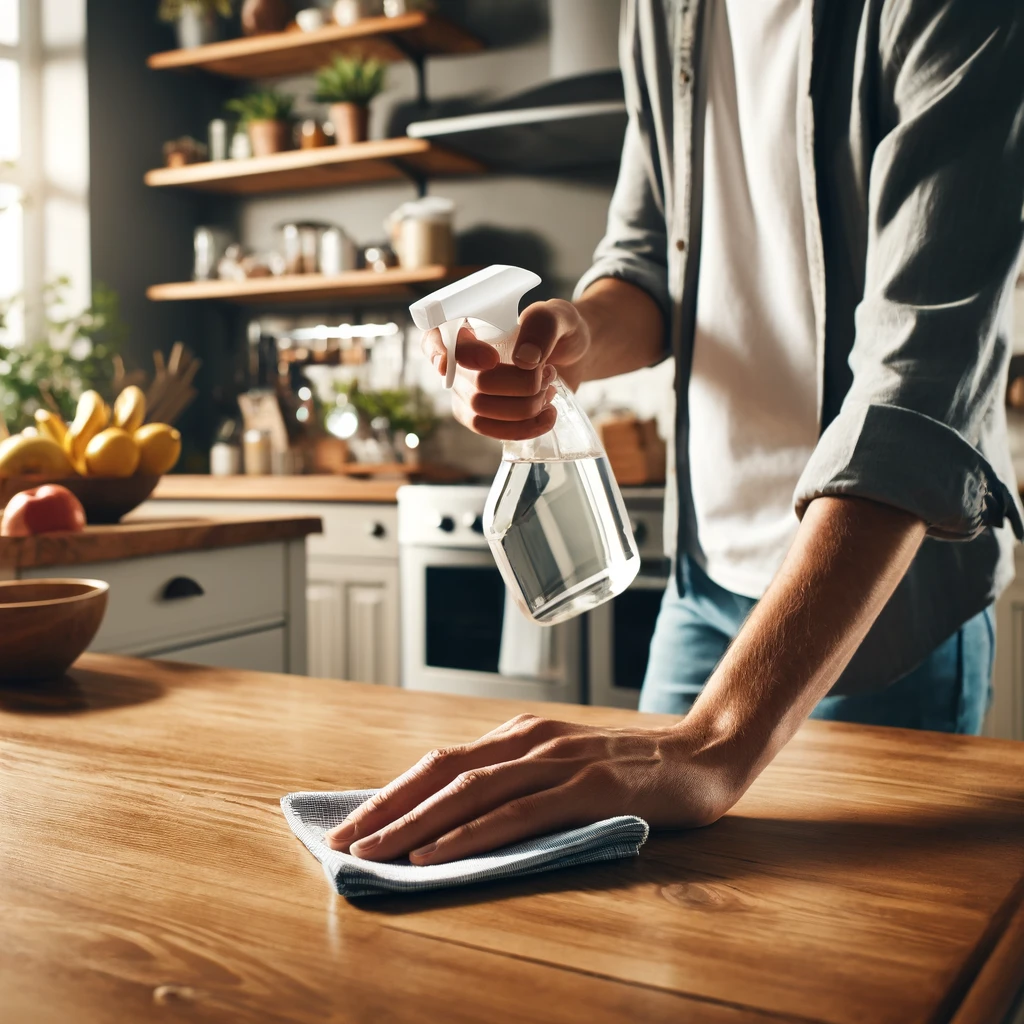Washing machines are an essential household appliance, but over time, they can accumulate dirt, grime, and even mold. Giving your washing machine a deep clean is crucial to ensure it runs efficiently and keeps your clothes fresh and clean. Here are six essential tips to help you deep clean your washing machine.
1. Gather Your Cleaning Supplies
Before you start deep cleaning your washing machine, it’s important to gather all the necessary supplies. Having the right tools on hand will make the process smoother and more effective. First on your list is white vinegar, a versatile cleaning agent that excels at breaking down grime and eliminating odors. Its acidic nature makes it a powerhouse for disinfecting and cleaning without causing any harm to your washing machine’s components.
Next, you’ll need baking soda. This common household item is not only great for baking but also serves as a natural deodorizer. Baking soda can help lift stubborn stains and neutralize any lingering smells in your washing machine. To assist with scrubbing, grab a microfiber cloth and an old toothbrush. The microfiber cloth is gentle yet effective, perfect for wiping down the drum and exterior without scratching surfaces. The toothbrush, on the other hand, is ideal for getting into those hard-to-reach spots, like the detergent dispenser and door seal, where dirt and mold tend to accumulate.
Lastly, dish soap will come in handy for cleaning the detergent dispenser and any exterior parts. Its grease-cutting properties make it perfect for removing soap scum and other residues. By having these supplies ready, you’ll be well-prepared to tackle the deep cleaning of your washing machine, ensuring it runs efficiently and keeps your clothes fresh and clean.

2. Clean the Detergent Dispenser
One of the most overlooked parts of your washing machine is the detergent dispenser. Over time, it can become a breeding ground for residue and mold due to the constant exposure to soap and moisture. To start, if your washing machine’s detergent dispenser is removable, take it out and give it a thorough cleaning. Soak it in hot, soapy water to loosen any accumulated grime. The heat helps to break down soap scum, while the soap itself cuts through grease and residue, making it easier to scrub away the buildup.
After soaking, use an old toothbrush to scrub away any remaining deposits. The bristles of the toothbrush can reach into the tiny crevices and corners of the dispenser, ensuring that all the gunk is removed. If your washing machine’s detergent dispenser is not removable, you can still give it a good clean. Soak a cloth in vinegar and use it to wipe down the dispenser thoroughly. Vinegar is a natural disinfectant and will help to break down any soap residue and kill mold spores, ensuring that your washing machine is clean and hygienic.
It’s important to make this a regular part of your washing machine maintenance routine. Keeping the detergent dispenser clean not only helps to prevent mold and mildew but also ensures that your detergent can do its job effectively, leaving your clothes cleaner and fresher. By taking the time to clean this small but significant part of your washing machine, you’ll be contributing to the overall efficiency and longevity of your appliance.
3. Run a Hot Cycle with Vinegar
One of the most effective methods for deep cleaning your washing machine is to run a hot cycle with white vinegar. White vinegar is a fantastic natural cleaner, renowned for its ability to break down grime and eliminate stubborn odors. To begin, pour two cups of white vinegar directly into the drum of your washing machine. This method is particularly effective because vinegar’s acidic properties work to dissolve any residue or buildup that has accumulated over time.
Running a hot water cycle with vinegar not only disinfects the interior of your washing machine but also helps to clear out any hidden mold or mildew that might be lurking in the nooks and crannies. The heat from the water enhances the cleaning power of the vinegar, ensuring that every part of the drum is thoroughly sanitized. This step is crucial for maintaining the hygiene of your washing machine, as it prevents the growth of bacteria and keeps your appliance smelling fresh.
Moreover, this hot vinegar cycle serves a dual purpose by addressing any lingering smells that might be emanating from your washing machine. Persistent odors can often be a sign of buildup or mildew within the machine, and vinegar is highly effective at neutralizing these smells. By incorporating this simple yet powerful cleaning step into your routine, you ensure that your washing machine remains in optimal condition, providing you with clean and fresh laundry every time. Regularly running a hot cycle with vinegar not only extends the life of your washing machine but also enhances its performance, making it a vital part of your deep cleaning regimen.
4. Scrub the Door Seal
Front-loading washing machines are popular for their efficiency and effectiveness, but they come with their own set of maintenance challenges. One of the key areas that require regular attention is the rubber door seal. This seal can easily collect dirt, detergent residue, and mildew due to its constant exposure to moisture. To keep your washing machine in top condition, it’s essential to clean this seal thoroughly. Start by mixing a solution of equal parts water and vinegar. This mixture harnesses the cleaning power of vinegar while being gentle on the rubber components of your machine.
Use a cloth or an old toothbrush to apply the vinegar solution to the door seal. The toothbrush is particularly useful for scrubbing into the tight crevices where mold and grime like to hide. Be meticulous in your cleaning, ensuring that you reach all the hidden spots that are prone to build-up. The vinegar not only cleans but also disinfects, killing any mold spores and bacteria that may be present. This thorough cleaning will prevent the unpleasant odors that often originate from moldy door seals, ensuring that your washing machine smells fresh and clean.
Regularly scrubbing the door seal of your washing machine can also prevent potential damage to your clothes. Residual dirt and mold can transfer onto your laundry, leaving stains and unpleasant smells. By maintaining a clean door seal, you safeguard your clothing and enhance the overall hygiene of your washing machine. Make this scrubbing process a part of your monthly cleaning routine to ensure that your washing machine remains efficient and free from contaminants.
5. Use Baking Soda for Extra Freshness
After completing the vinegar cycle, the next step in ensuring your washing machine is thoroughly cleaned is to use baking soda. Baking soda is a natural deodorizer and an excellent cleaning agent that can tackle any remaining residues in your machine. To begin, sprinkle half a cup of baking soda directly into the drum of your washing machine. This simple addition can make a significant difference in the freshness and cleanliness of your appliance.
Running another hot water cycle with baking soda helps to neutralize any lingering odors that the vinegar might not have completely eradicated. The heat of the water activates the baking soda, allowing it to dissolve and spread throughout the drum, effectively targeting all areas. This process not only deodorizes the machine but also works to lift and remove any stubborn grime or soap scum that might still be clinging to the interior surfaces. By doing this, you ensure that your washing machine remains odor-free and ready for your next load of laundry.
Incorporating baking soda into your regular washing machine maintenance routine offers multiple benefits. Beyond just deodorizing, it also helps to keep the drum and internal components clean, which can improve the machine’s efficiency and prolong its lifespan. Regular use of baking soda can prevent the buildup of residues that cause odors and operational issues, ensuring that your washing machine continues to perform at its best.

6. Wipe Down the Exterior
While the interior of your washing machine is the primary focus of deep cleaning, it’s important not to overlook the exterior. Dust, fingerprints, and smudges can accumulate on the outside, making your washing machine look dingy and unkempt. To maintain the overall appearance and hygiene of your appliance, regularly wipe down the exterior surfaces. Start by dampening a cloth with a little dish soap and water. Dish soap is effective at cutting through grease and grime without being too harsh on the machine’s finish.
Gently wipe down all the exterior parts of your washing machine, including the top, sides, and control panel. Pay particular attention to areas that are frequently touched, such as buttons and handles, as these can harbor oils and dirt from your hands. By keeping these areas clean, you not only enhance the look of your washing machine but also ensure that the controls function properly and remain easy to use. A clean exterior contributes to the overall cleanliness of your laundry room, making it a more pleasant space to work in.
After wiping down the exterior with soapy water, it’s crucial to dry it thoroughly. Moisture left on the surface can lead to water spots and, over time, might contribute to rust or other damage. Use a dry, soft cloth to remove any remaining water, ensuring that the exterior is completely dry. This final step helps to maintain the appearance of your washing machine and prevents any potential moisture-related issues. Regularly wiping down the exterior of your washing machine not only keeps it looking great but also complements your efforts in maintaining a clean and efficient appliance.

Washing Machine is Easy to Use and Maintain!
Maintaining a clean washing machine is essential for ensuring your laundry comes out fresh and free from contaminants. By following these steps—gathering your cleaning supplies, cleaning the detergent dispenser, running a hot cycle with vinegar, scrubbing the door seal, using baking soda for extra freshness, and wiping down the exterior—you can keep your washing machine in top condition. Regular maintenance not only extends the life of your appliance but also enhances its performance, ensuring that each load of laundry is as clean as possible.
However, deep cleaning your washing machine can be a time-consuming task, and it’s understandable if you find it challenging to fit into your busy schedule. If you’re pressed for time or simply prefer to leave it to the professionals, consider hiring a professional cleaning service. Cleaning Hive offers comprehensive cleaning services tailored to your specific needs, ensuring that your washing machine, as well as other areas of your home, receive the attention they deserve. Their expert team is equipped with the knowledge and tools to provide a thorough clean, leaving your appliances and living spaces spotless.
At Cleaning Hive, the focus is on delivering high-quality cleaning solutions that meet the highest standards. Whether it’s regular maintenance, a one-time deep clean, or specialized services for specific areas of your home, they have the expertise to handle it all. By choosing professional cleaning services, you can save time and enjoy peace of mind knowing that your washing machine and other household items are in capable hands. For more information on their deep-cleaning services and how they can help you maintain a clean and healthy home, visit Cleaning Hive today.




